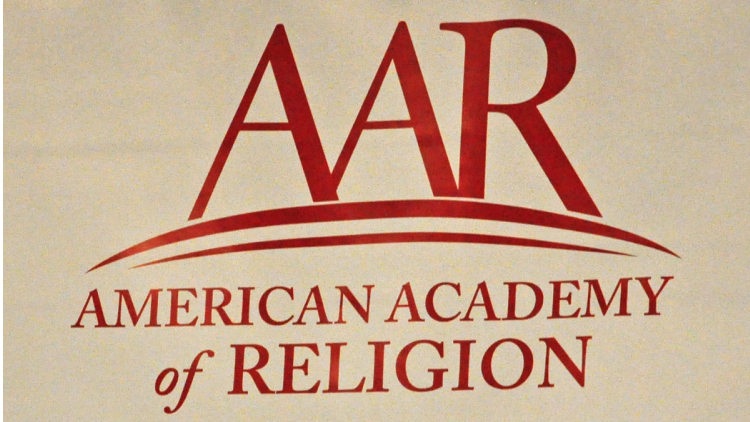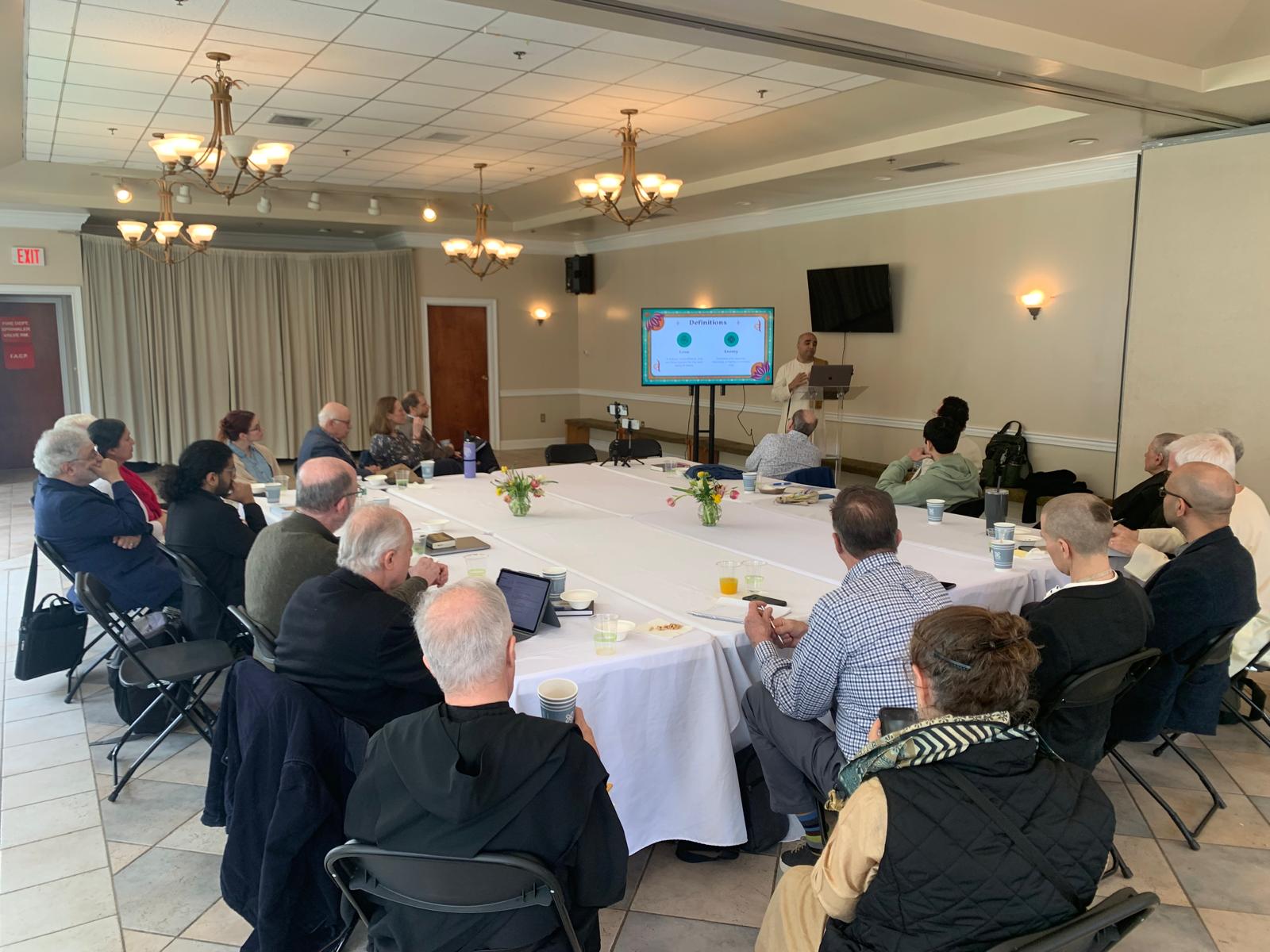“Pioneers of Krishna Bhakti” Featured at American Academy of Religion Convention
By Anuttama Dasa | Dec 05, 2013

The American Academy of Religion’s (AAR) Annual Meeting is the world’s largest gathering of religion scholars. Held in combination with the Society of Biblical Literature, this year’s convention in Baltimore, Maryland on November 23-26th drew an estimated 12,000 scholars from all over the world.
For the first time participant, or even a veteran of AAR events, the array of seminars presented over the four-day meeting can be overwhelming. Panel discussions are held on topics as diverse as New Testament Textual Critics; Religion, Holocaust and Genocide; South Asian Religions; Pauline Theology; Religion, Social Conflict and Peace; African Biblical Hermeneutics; Animals and Religion; Tantric Studies, and hundreds of other themes. The entire Baltimore Convention Center and several nearby hotels were filled with simultaneous sessions of academic papers presented by a seemingly endless number of religion professors.
In the midst of this cornucopia of studies of mysticism, ritual, philosophy, and liturgy, interest in Vaishnavism, or the devotional bhakti-yoga tradition, has increased significantly in recent years at the AAR. So much so that this year’s conference held not one, but two separate panels focusing on the contributions of modern Vaishnava scholars and saints.
The first such session was featured on Saturday morning at the Dharma Academy of North America’s (DHANAM) 11th Annual Conference, a corollary, yet highly regarded sub-group of the AAR. The Saturday morning panel was entitled, “Modern Pioneers of the Globalization of Krishna Bhakti: Prominent Teachers of the Caitanya School.”

Dr. Graham M. Schweig presides over a panel at the American Academy of Religion on “Vaishnava Pioneers.” Panelists are from the left Dr. Ferdinando Sardella, Dr. Jason Fuller, Lucian Wong and Abhishek Ghosh.
The panel of five scholars featured three papers about the contributions of Srila Bhaktivinode Thakura, one paper on the contributions of Srila Bhaktisiddhanta Sarasvati, and one paper on the work of Tamal Krishna Goswami and his recently published book about the teachings of ISKCON’s Founder-acarya, Srila A.C. Bhaktivedanta Swami Prabhupada.
The first paper, by Abhishek Ghosh of the University of Chicago, was entitled “Krishna Bhakti and the ‘West’: The Legacy of Bhaktivinode.” In it Ghosh explained that although Bhaktivinode (1838-1914), also known as Kedarnath Datta, never left India he was a pioneer in spreading the Krishna tradition around the globe through his writings and in “creating the intellectual framework for presenting Krishna bhakti to western audiences.”
Lucian Wong, University of Oxford, presented on “Bhaktivinode Thakura’s Krishna-Samhita: Negotiating History in Nineteenth Century Bengal.” Wong discussed Bhaktivinode’s contributions in light of the “colonial presence in the region [that] entailed intense and prolonged exposure to challenging currents of western modernity.”
Dr. Jason Fuller, of DePauw University, named his paper “Re-Branding Gaudiya Vaishnavism: Bhaktivinode Thakura and the Religious Marketplace of 19th Century Bengal.” In it he noted that the Thakura “embarked upon a successful, decades long campaign to rebrand Gaudiya Vaishnavism in a manner befitting its theological beauty, depth, and promise as a religion for the modern times.”

Colleagues in the study of Vaishnavism find time for a shared meal during the busy American Academy of Religion convention.
Ferdinando Sardella, University of Uppsala (Sweden), presented “The Globalization of Bhakti: Bhaktisiddhanta and the Gaudiya Math.” Dr. Sardella explored the life and place of Bhaktisiddhanta Sarasvati (1874-1937) “founder of one of the earliest international Krishna bhakti movements, the Gaudiya Math.” Sardella noted that Bhaktisiddhanta’s “theology of personality and understanding of bhakti as the innermost feature of the self became de facto an alternative theological movement against interpretations of advaita Vedanta.”
Rounding out the DANAM panel was Dr. Graham M. Schweig of Christopher Newport University. His paper noted that “Vaishnavism saw its first global spread beyond the borders of India with the work of Bhaktivedanta Swami Prabhupada” who, with his disciples “transformed the faith of many… built places and temples of worship… and provided a haven for a growing Indian-Hindu diaspora in the United States and other countries.”
A second similar panel was held on Sunday sponsored by the AAR’s Hinduism Group. It was entitled, “Global Hindu Transmissions and Migrations: Cultural Crossings and Generational Connections.” Papers at this session included “Krishna-bhakti in the West: Kedarnath Bhaktivinode and Caitanya Vaishnava Missionaries” by Abhisek Gosh, and the “Hindu Mega-Ashrama: New Vrindavana and the Global Hare Krishna Movement” by Jason Fuller.
While Krishna bhakti and ISKCON have been the subject of study at the AAR in the past, having this amount of attention given to the Chaitanya Vaishnava tradition was a first.

Prof. John Hawley of Columbia University responds to a panel on “Cultural crossings and generational connections at the AAR convention.”
Part of the reason for the increase in interest is, of course, ISKCON’s global growth and sustainability as an international religious community. A more immediate factor is the recent surging number of young scholars with expertise in the Chaitanya bhakti tradition.
The Oxford Centre for Hindu Studies has played a major role in facilitating the study of Vaishnavism in general and in the promotion of higher studies of religion among ISKCON members.
Dr. Ravi Gupta is the Charles Redd Chair of Religious Studies at Utah State University and current president of the Society for Hindu-Christian Studies at the AAR. He was raised in the ISKCON community in Boise, Idaho, and later completed his doctoral studies at Oxford University.
Dr. Gupta commented, “As more scholars focus their interest on Chaitanya Vaishnavism, there is growing awareness of the contributions of this long standing historical tradition, its teachers and its theology. This will be of benefit to all serious students of Indian religion, as well as to members of ISKCON.”
The 2014 AAR Convention will be held in San Diego, California.












